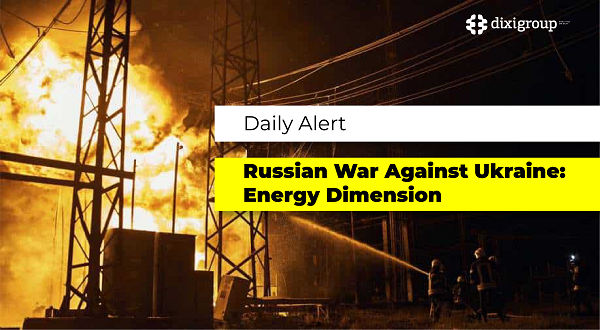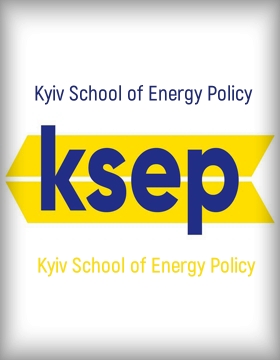Russian nuclear precedent: how the world is losing control
The occupied nuclear plant has become a risk zone without access, personnel, and control.

The Zaporizhzhia Nuclear Power Plant, the largest nuclear facility in Europe, has been under the control of Russian troops since March 2022. After its capture, the Russians have gradually militarized the facility and are trying to integrate it into the Russian energy system. The recent actions of the occupiers, particularly in the regions south and east of the Zaporizhzhia Nuclear Power Plant, indicate a new phase of energy integration of the occupied territories into the Russian system, which is accompanied by serious risks to the security and stability of not only Ukraine, but also all of Europe.
Is there a chance to regain control of the Zaporizhzhia Nuclear Power Plant and de-occupy the Zaporizhzhia Nuclear Power Plant, Ukrainian Energy Research investigated.
“Atomic Shield” for the Occupiers
The Zaporizhzhia Nuclear Power Plant was captured on the night of March 4, 2022, after shelling, which was an unprecedented violation of international law. Russian military equipment and personnel were deployed directly on the territory of the nuclear facility, turning it into a “nuclear shield.”
Yuri Korolchuk, an expert at the Institute of Energy Strategies, explains that until August 2022, when Russia had already captured the Zaporizhzhia NPP and fighting was underway, the plant was operating and generating electricity for Ukraine’s power system. “In fact, such a scheme was already operating, only it was somewhat different. Ukrenergo, Energoatom, they actually semi-formally controlled the operation of the Zaporizhzhia NPP, they issued commands and regulated its operation. But then, since August, the operation has been suspended,” he says.
As of now, Ukraine is still supplying electricity to the Zaporizhzhia NPP through the last surviving power transmission line, The Times reports.
Before the start of the full-scale war, there were four such lines, but three of them are now seriously damaged, says a plant specialist who spoke to The Times on condition of anonymity. In the event of a complete loss of external power, diesel generators are provided on each power unit, which are responsible for circulating water to cool the nuclear fuel. However, these backup power systems can also fail if used too often or if there is a lack of proper maintenance.
The plant’s cooling tank was previously replenished with water from the Kakhovka reservoir on the Dnieper. However, after the dam was blown up by Russian troops in June 2023, the reservoir has virtually disappeared — and this has created a critical shortage of water to cool the reactors.
The plant employee suggests that the occupying forces may find a temporary technical solution, but believes that the water problem is deeper than it seems: the areas north of the plant remain contaminated with munitions and are virtually inaccessible for safe operation.
Former employees also say that Russian special services are preventing international inspectors from entering certain parts of the plant, effectively making full control impossible.
“In my opinion, the longer this situation continues, the greater the risk of a catastrophe,” a ZNPP employee said in an interview with The Times.
Analysts are convinced that in the event of an incident, the scale of the contamination could be serious. Professor Joel Turner of the University of Manchester, who specializes in nuclear fuel, notes that the consequences could include a threat to the health of both people and animals over large areas. In the event of radioactive contamination, the land and water sources would become unfit for habitation, farming or even hunting.
“There are a number of radioisotopes contained in nuclear fuel that can enter plants and then into the bodies of animals, where they accumulate. This leads to an increase in the number of mutations and oncological diseases,” he explains.
Residents of the occupied Energodar, according to Mayor Dmitry Orlov, are forced to live under constant pressure from the invaders - with cases of physical torture, beatings and persecution, including of the plant’s employees.
IAEA powerlessness
As Serhiy Kuzan, head of the Ukrainian Center for Security and Cooperation, notes, the militarization of the ZNPP has become a gross violation of the UN Charter and the principles of the IAEA. However, despite the constant presence of representatives of this organization at the facility, effective instruments of influence on Russia have not been used. Its participation in international nuclear forums and projects has not yet been terminated.
IAEA missions change regularly, but their activities remain formal. Since they operate in the occupied territory, without real access to all elements of the infrastructure and independent control, their impact on the situation is minimal. The Ukrainian authorities have repeatedly called for more active action and a clearer legal response.
According to the ZNPP occupation administration, the IAEA missions to ZNPP were rotated again these days through the temporarily occupied territory.
“After the first case, this will become a permanent practice for the occupiers and the IAEA. We must officially abandon the IAEA missions to ZNPP, it is enough to work for the PR of IAEA Director General Rafael Grossi and supply the occupiers with hostages (the previous mission was at ZNPP for 2.5 months), which legitimize the actions of the occupiers for the whole world, because they do not affect the technical solutions and security support of ZNPP.
The occupiers are again enticed experts with alleged actions of the Armed Forces of Ukraine and reports of artillery fire, which they themselves did,” says nuclear energy expert Olga Kosharna.
Integration into the Russian Federation
The latest technical changes in occupied Mariupol, in particular the modernization of electrical substations, the construction of new power lines and the replacement of transformers, indicate attempts to create a new electricity supply channel from the Zaporizhzhia NPP. As explained by the advisor to the mayor of Mariupol, Petro Andryushchenko, this is about physically linking the occupied south to the station.
The scope of work indicates an attempt to create a new reinforced power supply scheme for Mariupol, which will allow it to receive large volumes of electricity. Of particular attention is the replacement of transformers with more powerful ones, which is a typical step in preparing to connect an external powerful source — in particular, the Zaporizhzhia NPP.
“This is a physical link to the Zaporizhia NPP through the reconstruction of regional power lines that can connect to the occupied regions of the Zaporizhia region,” Andryushchenko explained.
In his opinion, this is part of Moscow’s broader strategy for the energy assimilation of the regions, which the Kremlin seeks to present as the “integration of new territories.”
Yuriy Korolchuk, an expert at the Institute of Energy Strategies, points out that there used to be a power line connecting the Zaporizhia NPP with occupied Crimea, but it was damaged under unknown circumstances, which led to the cessation of electricity supplies to the peninsula. He believes that from a geographical and technical point of view, it is more expedient to lay a new trunk line from Russian territory to the Zaporizhia NPP in order to ensure the integration of the station into the Russian energy system. Such an approach, in his opinion, will allow Russia to balance energy flows within its system and use the electricity that the Zaporizhia NPP can potentially produce.
At the same time, he clarifies that the construction of power lines is not carried out by ZNPP employees, but by specialized services or contractors, which simplifies the organization of the process. This means that the technical infrastructure for connecting the station can be created relatively quickly if Russia attracts the necessary resources.
The problem of the lack of qualified personnel at the station is key. According to Ukrainian sources, they are trying to shift some of the work to people without nuclear experience. Some teachers from Energodar have been sent by the occupiers to accelerated training courses for nuclear engineers. Experts warn that this creates critical risks of operational errors and man-made accidents.
Senior Research Fellow at the Institute for Nuclear Power Plant Safety Problems of the NAS of Ukraine Olena Pareniuk notes that the power units have not been serviced for years, and the personnel allowed to work do not have sufficient competence. Technical restoration of normal operation requires full diagnostics and certification, which is currently impossible.
“This is dangerous from the point of view that the people who work there now are not specialists who actually worked at the Zaporizhzhia nuclear power plant. This increases the risk of errors in the operation of the nuclear power plant,” the expert notes.
Also, according to the scientist, the six power units of the Zaporizhzhia nuclear power plant have not been serviced for three years, which makes their quick restoration impossible. Now they need to be completely checked again for defects and damage. Restoration of work requires a comprehensive inspection of all systems, which is an expensive and complex process.
“In addition, the restoration of normal operation of the Zaporizhzhia nuclear power plant is extremely expensive. And given that the international community does not recognize the plant as Russian, which makes its operation illegal. Although the radiation danger is not critical at the moment, the occupation of the Zaporizhzhia nuclear power plant creates a serious precedent,” says Pareniuk.
According to expert Yuriy Korolchuk, technically connecting the Zaporizhzhia nuclear power plant to the Russian power system is possible by laying a new trunk line from the territory of the Russian Federation. He believes that electricity from the facility can be sent to temporarily occupied parts of Zaporizhia, Kherson and Donetsk regions, since consumption in Crimea is already ensured.
Currently, only one unit is in a hot shutdown - it takes about 6 months to start two power units, provided that personnel and resources are available. However, the Russian Federation is already creating the prerequisites for such a scenario in terms of infrastructure.
Nuclear blackmail as a Russian strategy
The occupation of the ZNPP is not only a violation of international law, but also an element of nuclear blackmail. The station is in a combat zone, it is periodically shelled, which only increases the fear of a nuclear disaster. Russia uses the ZNPP as a political tool of pressure, trying to impose its agenda both around the station and in general in negotiations with the West.
Experts name three scenarios for the deoccupation of the ZNPP, including military, diplomatic and hybrid. The latter involves the gradual displacement of the occupiers through a combination of sanctions, economic, informational and military pressure, as well as the destruction of logistical routes and infrastructure related to the Zaporizhia NPP.
The Zaporizhia NPP is one of the most dangerous and important facilities in the context of the Russian-Ukrainian war. Its deoccupation requires a coordinated international approach, a clear demilitarization plan and long-term
recovery strategies. All this is possible only under the condition of real international pressure and the understanding that nuclear safety has no borders and cannot be a subject of bargaining. However, experts themselves doubt these ways as truly effective.
Lever of pressure
Russia has long used the occupied Zaporizhzhia nuclear power plant as an instrument of geopolitical blackmail. After its capture, the equipment at the plant was systematically destroyed, facilities mined, and the territory itself turned into a military bridgehead. Drones regularly hit the plant's infrastructure - the last such case was recorded on May 22. Routes of enemy missiles and drones also pass over the Zaporizhzhia nuclear power plant.
According to Volodymyr Omelchenko, Director of Energy Programs at the Razumkov Center, Russia is currently trying to finally integrate the Zaporizhzhia nuclear power plant into its energy system.
According to Petro Andryushchenko, Advisor to the Mayor of Mariupol, the construction of a new power transmission line from the occupied territories is nearing completion. Apparently, this power line is supposed to connect the station to the Russian power grid to power Crimea, the occupied Ukrainian territories, and possibly the Russian south itself.
Russia is also involving external partners in this scheme, in particular the United States, in order to force Ukraine to agree to joint management of the station under the guise of a compromise. As Omelchenko explains, Moscow may try to legalize the connection of the station by proposing that part of the electricity will go to Ukraine, part to the Russian Federation, and even involve the American side in this process. Thus, after the power is supplied to the station units from the Russian side, Ukraine will actually lose control - even technically.
After the ZNPP is launched from the Russian power grid, according to Omelchenko's forecasts, Russia may stage a provocation: destroy Ukrainian power lines and finally "switch" the station to its own power supply. This will create a situation in which no international organization - neither the IAEA nor the United States - will be able to influence events. After all, the risks of a nuclear accident will be too high, and even Western partners will recognize the new reality — the ZNPP, they say, “works for Russia.”
Such a scenario will not allow Ukraine to shell the power lines of the station even in the event of an attempt at de-occupation — Moscow will accuse Kyiv of nuclear terrorism.
A separate issue is the technical ability of the Russian Federation to launch the station. Back in 2023, the head of Ukrhydroenergo Igor Syrota stated that after the explosion of the Kakhovka HPP, the water in the cooling pond was not enough for the full operation of the ZNPP. Russia can use artesian water or the remaining water in the reservoirs, but this will allow launching a maximum of 2-3 units, no more.
In addition, as Omelchenko emphasizes, even if the Russians are technically able to connect the station, without international recognition this will be a violation of all norms. And for the full functioning of the ZNPP, highly qualified personnel are needed, which is currently in critical shortage - out of 11 thousand employees, less than 3 thousand remain. In a cold shutdown state, this is enough, but not for launch.
The danger is that the Russians may use the launch of the ZNPP not so much for generation, but as a lever of pressure on Ukraine and Western countries. They say, "don't touch us - otherwise the plant may get out of control."
Despite this, according to Omelchenko, the return of the ZNPP to Ukrainian control is possible only in the event of a change in the political situation in Russia or its internal economic exhaustion. The transfer of the plant "in good faith" is excluded. Back in 2024, Kremlin representatives publicly stated that the ZNPP would remain under the control of the Russian Federation.
Omelchenko also emphasizes: if the world community agrees to de facto Russian management of the plant, this may become a precedent for the legalization of the occupation as a whole. The Kremlin is using the idea of “joint management” through a newly created investment fund as another way to consolidate the status quo.
As for Rosatom, which is directly involved in the seizure of the ZNPP, sanctions have not yet been applied. The reason is the dependence of many countries on the supply of Russian nuclear fuel. There is no real international pressure on the company.
A separate risk is fuel wear. Energoatom President Petro Kotin warned back in 2024 that the terms of safe storage of nuclear fuel in reactors are running out. If it is not removed or replaced, this creates the prerequisites for dangerous incidents.
If in the future the plant is returned to Ukraine, its restoration will take at least 1.5–2 years. It will be necessary to conduct a complete demining, technical inspection, replacement of damaged equipment, selection and training of personnel. However, for now this is only a hypothetical scenario.
Illiquid asset
"Talking about the launch of the Zaporizhzhia NPP and its full-fledged operation does not make sense at the moment. After the explosion of the Kakhovka hydroelectric power station and the catastrophic decrease in the water level in the former Kakhovka reservoir, the operation of the nuclear power station became technically problematic and potentially dangerous. The restoration of the entire system of hydraulic structures on the Dnieper is a separate large-scale task that is not even being considered at the moment. Therefore, for now we can only talk about minimal control over the situation.
"... about the station, not about its work. There have been no similar cases in world practice, so the solution will have to be sought in a unique, unprecedented format," Russian opposition blogger Anatoly Nesmiyan comments on the situation.
According to him, Russia's "achievements" in Ukraine over the 3.5 years of war look quite modest. In fact, there are only four of them: the partially occupied but significantly destroyed Donetsk coal basin (although even without Donbas, the Russian coal industry is in crisis), the agrarian Kherson region, which was left without water after the Kakhovka hydroelectric power station was blown up, the stopped Zaporizhzhia nuclear power plant, and Crimea, which again faced the problem of water supply - and a solution to this issue has never been found.
At the same time, none of these "annexations" of territories has been recognized by the international community, and there is no certainty that recognition will ever happen.
Olena Marchenko, specially for "Ukrainian Energy"








